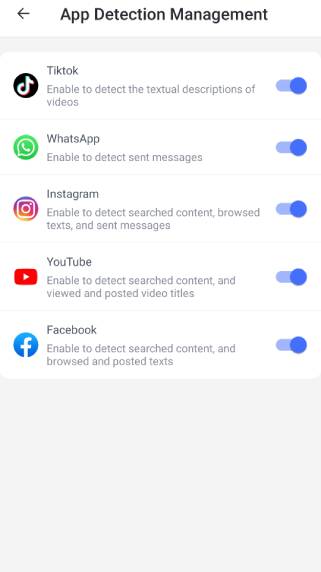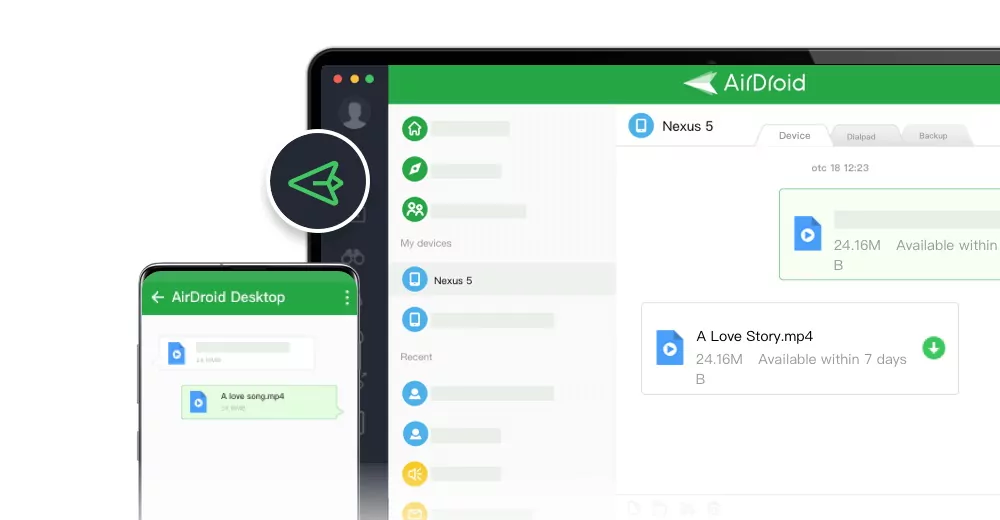Is TikTok Dangerous for Kids? What Harmful Content They Might See
TikTok has become a cultural phenomenon in the digital era, especially among kids. However, concerns about its safety for young users loom large. This article delves into the question: Is TikTok dangerous for kids?

In this article, we'll explore the reasons behind TikTok's popularity, reveal potentially harmful content, and discuss its impact on mental health and privacy. We'll also discuss TikTok's positive aspects and offer practical methods for parents to protect their children online.
- Part 1: Why Are Kids Hooked on TikTok?
- Part 2: Profiling Harmful Content on TikTok
- Part 3: Real-life Stories: Parents Share Their Experiences
- Part 4: Other Hidden Dangers of TikTok for Children
- Part 5: Protecting Your Child from TikTok's Threats
- Part 6: The Bright Side of TikTok: Possibilities of Learning while Having Fun
- Part 7: FAQs about TikTok's Threats
Why Are Kids Hooked on TikTok?
Kids are drawn to TikTok, a popular social media platform that revolves around creating and sharing short, engaging videos. TikTok's appeal among children can be attributed to several key factors.
Firstly, TikTok provides a platform for users to express their creativity through short videos. This creative outlet allows kids to showcase their talents, whether dancing, acting, or participating in various challenges. The format encourages self-expression in a visually captivating and easily consumable manner.
Secondly, TikTok's interactive features such as duets and collaborative challenges foster a sense of community among kids. These features allow children to engage with their peers, creating a shared virtual space for interaction and collective experiences.
Lastly, children, like most individuals, are drawn to social validation, a key aspect of TikTok's design. Features like likes, comments, and follower counts serve as measures of approval, making engagement on TikTok a form of social validation. This contributes to its addictive nature as children seek recognition from their peers.
Profiling Harmful Content on TikTok
TikTok, despite its popularity, is not immune to the presence of harmful content. Several types of such content permeate the platform, raising concerns about the potential exposure and its implications for users, particularly children.
One prevalent category is explicit content. TikTok has faced challenges in moderating and filtering out videos that contain explicit material, ranging from suggestive dance routines to explicit language. The ease with which users can encounter such content, often unintentionally, poses a risk of exposing children to inappropriate material.
Violent content is another area of concern. Although TikTok's guidelines prohibit violent behavior, instances of violence, both simulated and real, can be found on the platform. This content may include fights, dangerous challenges, or graphic scenes that can be distressing for young audiences.
Bullying is a persistent issue on TikTok as well. The platform's interactive features, while fostering a sense of community, can also be exploited for negative purposes. Instances of cyberbullying, where users leave hurtful comments or engage in targeted harassment, have been reported. The impact of such behavior on the mental wellbeing of young users is a significant concern.
The potential exposure to harmful content on TikTok has implications for the psychological and emotional wellbeing of children. Experiencing explicit, violent, or bullying content can have a lasting impact, influencing their perceptions, behavior, and overall mental health.
Real-life Stories: Parents Share Their Experiences
Parents share a spectrum of experiences, reflecting both positive and negative aspects;
- "As a parent, witnessing my child's creativity flourish on TikTok has been a joy. The platform has become an outlet for self-expression, allowing them to showcase talents and connect with peers who share similar interests. It's heartening to see how technology can foster positive creativity and camaraderie."
- "On the flip side, there have been moments of concern. Encountering inappropriate content and instances of cyberbullying on TikTok made me realize the need for constant vigilance. Balancing the positives and negatives is challenging, but it reinforces the importance of open communication and setting boundaries for responsible digital use within our family."
Other Hidden Dangers of TikTok for Children
Beyond the visible content concerns, TikTok poses less apparent but substantial risks for children, particularly in the realms of mental health and privacy.
Studies suggest a connection between extensive social media use, including platforms like TikTok, and adverse effects on mental health. Excessive screen time can contribute to feelings of anxiety, depression, and self-esteem issues among young users, impacting their overall wellbeing.
Moreover, the platform's data practices have raised privacy concerns. Instances of data leaks and privacy invasions on TikTok have sparked global debates. The collection of vast amounts of user data and uncertainties about data storage and sharing practices heighten the potential for privacy breaches.
Hence, we suggest that parents be cognizant of these hidden dangers, and consider fostering a balanced approach to digital engagement to protect their children's mental health and privacy.
Protecting Your Child from TikTok's Threats
TikTok can be fun, but it also has some risks. As parents, it's important to keep our kids safe. In this part, we will talk about easy things you can do to help protect your child when they use TikTok.
1Privacy Settings
Profile Privacy
Set TikTok accounts to private to control who can view and interact with your child's content.
Comments and Duets
Restrict who can comment and duet with your child's videos to minimize unwanted interactions.
2Restricted Mode
TikTok's Restricted Mode is a useful feature that can help protect children from inappropriate content. It's an easy tool to make your child's TikTok experience safer.
3Teach Online Safety
Educate your child about responsible online behavior, emphasizing the importance of not sharing personal information and reporting inappropriate content or interactions.
4Additional Tools to Enhance Child Online Safety
While TikTok offers features to enhance safety, supplementing it with external parental control tools can provide even more robust protection. Here, we'll explore a third-party tool designed to enhance online safety for children using TikTok, which is AirDroid Parental Control.

AirDroid Parental Control offers advanced features to monitor and manage your child's TikTok activities:
App Usage Tracking
Monitor your child's time on TikTok to ensure healthy screen time limits.
Content Monitoring
Monitoring inappropriate content by setting up keywords can enhance your control over the type of videos your child has accessed.

Remote Screen Mirroring
View your child's TikTok activities in real-time, allowing you to intervene if you detect any concerning content.
Notification Syncing
Sync TikTok notifications to check if your kids have received any inappropriate content, including follower updates, likes, comments, video suggestions, incoming DMs, and more.
The Bright Side of TikTok: Possibilities of Learning while Having Fun
While it's important to be aware of TikTok's potential risks, it's equally crucial to recognize its benefits. TikTok isn't just a platform for entertainment; it also offers unique opportunities for learning and creativity. Let's delve into the brighter side of TikTok, and explore how children can use this platform to learn and have fun at the same time.
TikTok's unique blend of entertainment and education creates an environment where learning becomes a joyful experience.
For instance, short tutorials on science experiments, language learning, and historical facts have gained popularity. Young users can acquire new skills by engaging in challenges, promoting a sense of accomplishment.
Also, TikTok's educational videos can help children learn about various topics like science or languages in an entertaining way. They can explore their interests, develop new skills, and even enhance their creativity by making their own videos. As always, parental guidance is essential to ensure that age-appropriate content is viewed.
By embracing and encouraging positive content, parents, and educators can leverage TikTok as a supplementary tool for knowledge dissemination, turning screen time into an opportunity for fun and learning for children.
Final Words
TikTok's impact on kids is a nuanced landscape involving risks and benefits. While potential harm exists, proactive measures, parental guidance, and tools like AirDroid Parental Control can contribute to a safer and more positive online experience for children. The key lies in striking a balance between allowing creative expression and ensuring robust safeguards to protect the wellbeing of young users.












Leave a Reply.